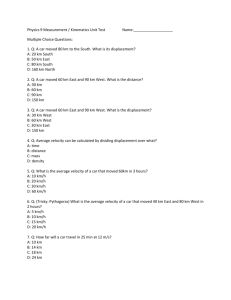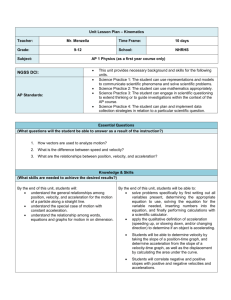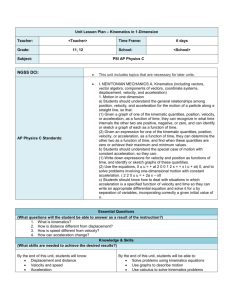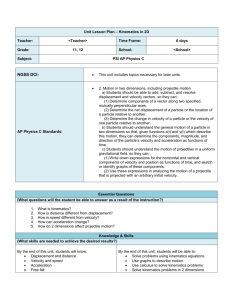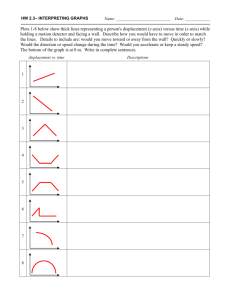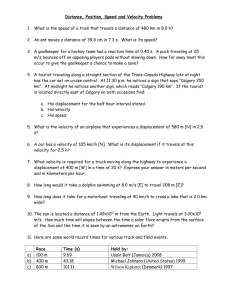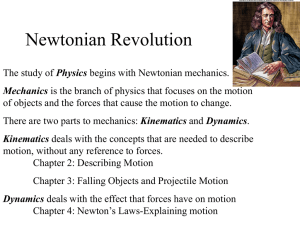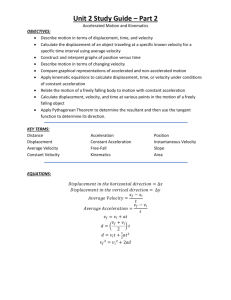Linear kinematics
advertisement
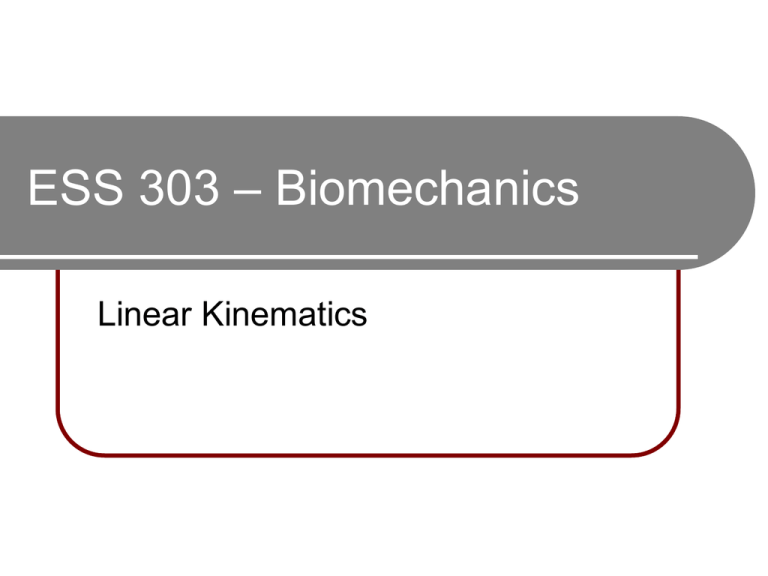
ESS 303 – Biomechanics Linear Kinematics Linear VS Angular Linear: in a straight line (from point A to A point B) Angular: rotational A (from angle A to angle B) B B Kinematics VS Kinetics Kinematics: description of motion without regard for underlying forces Acceleration Velocity Position Kinetics: determination of the underlying causes of motion (i.e., forces) Linear Kinematics The branch of biomechanics that deals with the description of the linear spatial and temporal components of motion Describes transitional motion (from point A to point B) Uses reference systems 2D: X & Y axis 3D: X, Y & Z axis Linear Kinematics B A What About This? B A What About This? B A Some Terms Position: location in space relative to a reference Scalars and vectors Scalar quantities: described fully by magnitude (mass, distance, volume, etc) Vectors: magnitude and direction (the position of an arrow indicates direction and the length indicates magnitude) Some Terms Distance: the linear measurement of space between points Displacement: area over which motion occurred, straight line between a starting and ending point Speed: distance per unit time (distance/time) Velocity: displacement per unit time or change in position divided by change in time (displacement/time) What About This? Distance & Speed B Displacement & Velocity A Graph Basics B (4,3) Y A (1,1) C (5,2) D (2,1) X SI Units Systeme International d’Units Standard units used in science Typically metric Mass: Kilograms Distance: Meters Time: Seconds Temperature: Celsius or kalvin More Terms Acceleration: change in velocity divided by change in time (Δ V / Δ t) (m/s)/s Acceleration of gravity: 9.81m/s2 Differentiation: the mathematical process of calculating complex results from simple data (e.g., using velocity and time to calculate acceleration) Derivative: the solution from differentiation Integration: the opposite of differentiation (e.g., calculation of distance from velocity and time) Today’s Formulas Speed = d / t Velocity = Δ position / Δ t Acceleration = Δ V / Δ t Slope = rise / run Resultant = √(X2 + Y2) Remember: A2 + B2 = C2 SOH CAH TOA Sin θ = Y component / hypotenuse Cos θ = X component / hypotenuse Tan θ = Y component / X component θ Sample Problems A swimmer completes 4 lengths of a 50m pool What distance was traveled? What was the swimmer’s displacement? Move from point (3,5) to point (6,8) on a graph What was the horizontal displacement? What was the vertical displacement? What was the resultant displacement? Sample Problems A runner accelerates from 0m/s to 4.7m/s in 3.2 seconds What was the runner’s rate of acceleration? Someone kicks a football so that it travels at a velocity of 29.7m/s at an angle of 22° above the ground What was the vertical component of velocity? What was the horizontal component of velocity?


